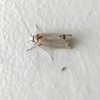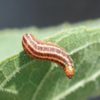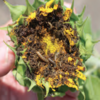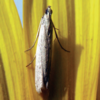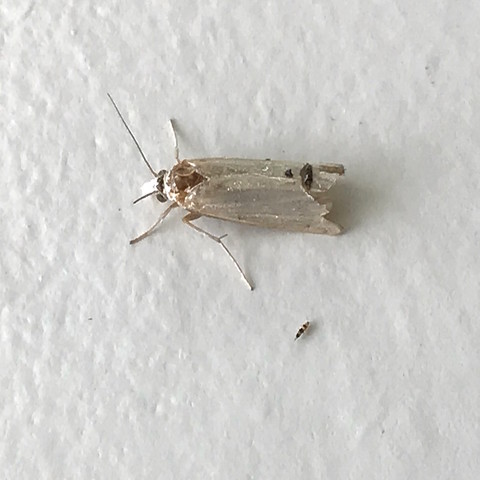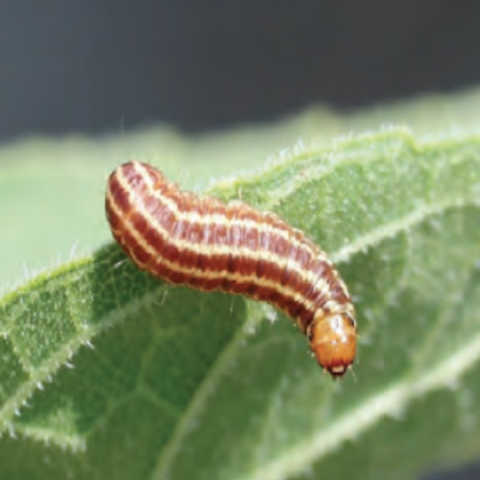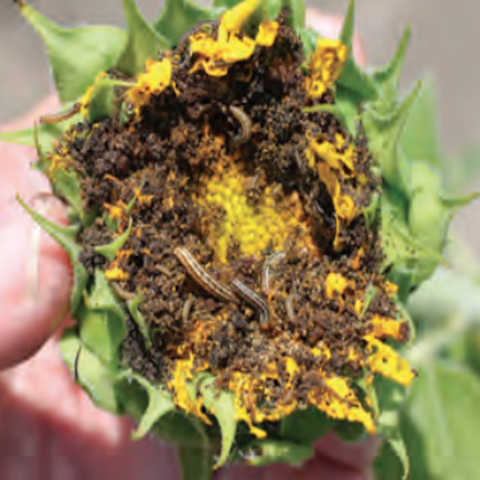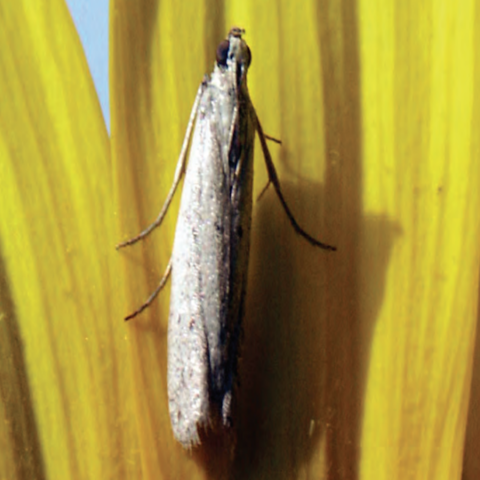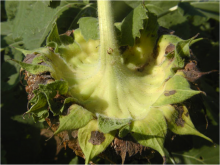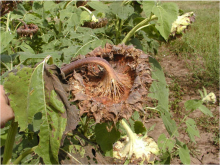Pest Profile
Management guide
Pest Description
Identification
Adult sunflower moths are grayish, 8.0 – 12.0 mm (3/8 – 5/8 inches) long, and rest with the wings clasped tightly to the body, giving the moth a slender cigar shape. Eggs are difficult to observe in the field because they are normally laid at the base of florets within the flower disk. Newly hatched larvae are pale yellowish but soon darken to shades of brown or purple with longitudinal white stripes and a light brown head capsule. Dark frass granules and tangled mats of webbing on flower faces are indicative of larval activity within the flower head.
Life History and Behavior
The sunflower moth is a migratory pest that breeds year-round in northern Mexico and moves northward annually with successive generations. This migration is facilitated by the seasonal weather patterns that typically prevail across the southern Great Plains during midsummer months and generate 'low-level jets' – southerly winds that are ideal for transporting airborne insects over large distances. The reproductive success of earlier generations probably affects the numbers of moths in each annual migration. Under warm conditions, the moths can complete a generation in 30 days. Kansas can experience secondary generations of local origin following the initial migration, especially in years when wild sunflowers are locally abundant, and early blooming fields where moths are not controlled can potentially serve as sources of infestation for later planted ones.
Adult sunflower moths are primarily nocturnal and probably orient to the smell of blooming flowers, although they may also enter sunflower fields before blooms open. Sunflower pollen stimulates oviposition and most eggs are laid in flowers during the early stages of bloom, usually at the base of individual florets. Early instar larvae feed almost exclusively on pollen; later instars feed on tissues of the receptacle and developing seeds, often leaving trails of webbing as they move across the face of the flower. Mature larvae descend from flower heads on strands of silk to pupate in crevices in the soil or under crop residues. Although some larvae could potentially survive the Kansas winter in diapause, observations suggest that the majority of late generation moths emerge in October and attempt a return journey to the south.
Wild host plants include Helianthus annuus, coneflower and other composites, all of which have small blooms that typically lack sufficient resources to support the complete development of a single sunflower moth larva. This means that larvae must eventually move among flowers on their natural host plants, exposing themselves to predation in the process. In wild sunflowers, 50% or more of sunflower moth larvae may be parasitized by various wasp parasitoids that attack these and other species of caterpillars. By contrast, cultivated sunflowers are no longer a 'natural' host plant; their large size represents a huge food supply capable of supporting the development of many larvae, while at the same time providing a refuge from parasitism. Research has shown that most wasp parasitoids are unable to effectively search these large flowers and simply abandon them, and many species likely do not possess ovipositors long enough to reach larvae that burrow deep within the receptacle. Certain parasitic flies of the family Tachinidae are slightly more successful because they deposit live larvae able to penetrate the flower in search of a host. Although biological control may contribute to suppression of sunflower moth in wild host plants, parasites and predators cannot prevent economically damaging infestations in commercial fields.

